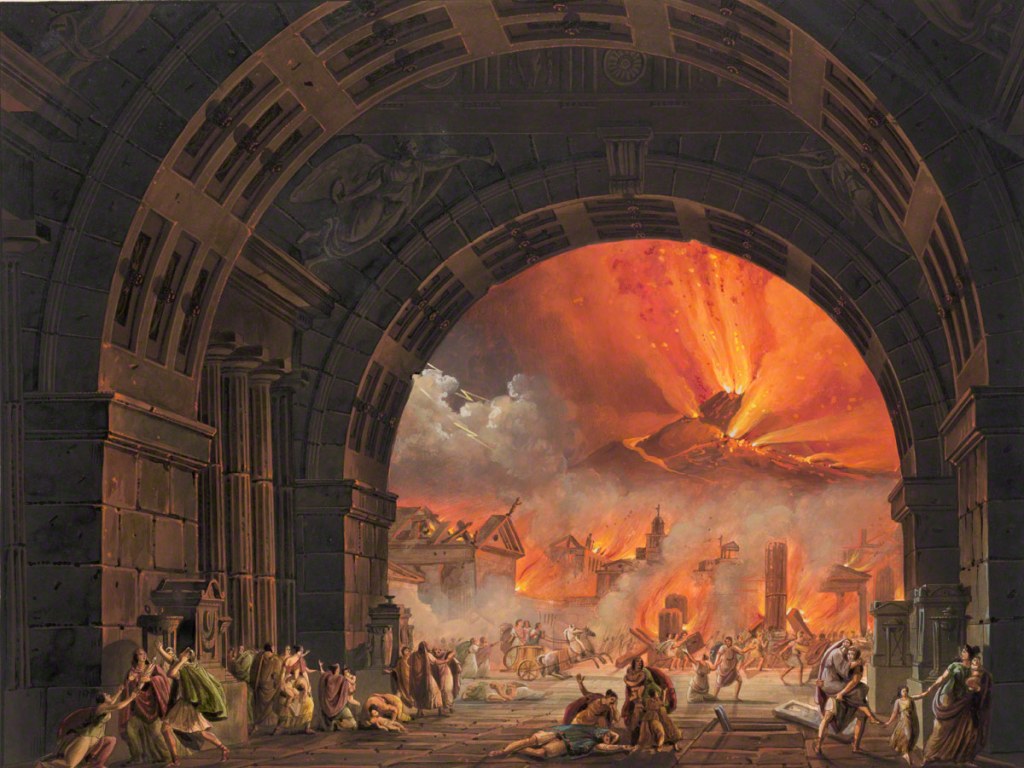In Aeon, Mara van der Lugt writes in defense of pessimism — sort of — by way of revisiting Voltaire’s response to Gottfried Wilhelm Leibniz in Candide:
The question concerning these philosophers, then, is not just the theoretical one about whether life in general is good or bad, but also a more concrete one: face to face with one who suffers, what can philosophy bring to the table? What can philosophy offer in the way of hope and consolation?
Both strands of thought have the same aim, but they plot different routes to get there: the pessimists offer consolation by emphasising our fragility, by recognising that no matter how hard we try, we may fail to achieve happiness, for no fault of our own. Meanwhile, the optimists seek to unfold hope by emphasising our capacity, by insisting that no matter how dark, how bleak our circumstances, we can always change our vision and direction, we can always aim for better.
But pessimism, at least today, gets a bad rap:
We are so quick to equate pessimism with passivity or fatalism or despair, and to reject it on that basis – for, of course, we do not want a philosophy that tells us to give up. But is that really what pessimism means? As Joshua Foa Dienstag argued in his book Pessimism: Philosophy, Ethic, Spirit (2006), far from leading to passivity, pessimism can be closely linked to a tradition of moral and political activism, as in the case of Albert Camus, whose courage and activism in the Second World War were infused by his pessimistic views.
Even the darkest pessimists never said that life would only get worse or can never be better: this is a caricature of pessimism, sketched quickly to dismiss it. Arthur Schopenhauer, the bleakest of them all, did not subscribe to it. On the contrary, he suggested that it is precisely because we cannot control the course of things that we can never know what the future holds: life may become worse or better. “The pessimist,” in Dienstag’s words, “expects nothing.” There is not much hope in this, perhaps, but it is a kind of hope nevertheless. And so too is the faint glimmering that can be found amid the darkest pages of these writers: the quick unquiet intuition that something can be gathered in the black vision; that our eyes may be opened in ways they were not before; that we may see in the darkness.
It is why hopeful pessimism may not be a contradiction, but a manifestation of the wild power that is harnessed only when life’s darkest forces are gathered into the strange alchemy of hope.
As an armchair pessimist, I would put it a little differently. Pessimism for me is not about claiming to hope for nothing while secretly hoping for something — or even less about gathering the “wild power” of pessimism into a “strange alchemy of hope.” Ugh.
It’s about rejecting the question of whether the world will get better or worse completely. What do “better” or “worse” even mean, and how can I know when something is getting better since I live at a fixed point in time and can’t possibly know the long-term consequences of any of my actions? Protesting child labor in China seems like a good thing until you learn that the alternative to working in a factory for a lot of these kids is living on the street.
Pie-in-the-sky questions like “How can I make the world a better place?” are of negligible value when it comes to living a good life. It is better to focus on living rightly in the present regardless of outcome. Sometimes, of course, you have to take into account what the outcome of a decision might be to help determine what the “right” thing to do is. Sure. But this happens a lot less frequently than people think and is usually of limited value in a world as contingent as ours.
In other news
John Lewis-Stempel, who spent a year living wild in Herefordshire and wrote about it in The Wild Life, reviews Deer Man, “Geoffroy Delorme’s account of seven ‘wild man’ years in the Forêt de Bord, Normandy, living among a herd of roe deer”: “Seven years with the herd, and Delorme emerges from the forest an advocate for his deer ‘family’. . . By identifying with doe-eyed roe deer rather than going properly hunter-gatherer Paleo, Delorme comes askew on his own key question, of how to preserve the Forêt de Bord’s roe deer — and by extension, deer and wildlife elsewhere in over-populated Europe. His proposed solution is to ‘make these marvellous animals responsible for their own management’. This is a Pan pipe dream.”
Benjamin Schull writes about nightlife in Berlin in the 1990s: “Ulrich Gutmair moved to Berlin three weeks before the Berlin Wall came down in the autumn of 1989. It was fortuitous timing. Not only did the Mauerfall, as it’s known in Germany, signal the end of the Cold War, but Gutmair’s move also allowed him to experience Berlin during a unique social moment. The city he recalls in The First Days of Berlin: The Sound of Change, published in Germany in 2013 and now available from Polity Press in an English translation by Simon Pare, is a place where squats, music clubs, and art houses spring up as fast as Berliners move between East and West. ‘[A] space of possibility had opened up,’ Gutmair writes.”
The unknown Wyeth: “In Andrew Wyeth’s prolific career, which lasted seven decades, he worked largely within a small radius of his rural family homes here and in Cushing, Maine. Making acutely observed sketches of the landscapes and people in these isolated communities, he later translated them into paintings in the studio, creating indelible images of American life. Now, some 7,000 works by Wyeth, only 15 percent of which have been previously exhibited, will be made accessible for exhibition, scholarship and loans through an unusual partnership between the Wyeth Foundation for American Art.”
The confounding politics of camping in America: “Over the decades, the act of sleeping outside has served wildly varying ends: as a return to agrarian ideals, a means of survival, a rite of passage for the nuclear family, a route to self-improvement, and a form of First Amendment expression. In Young’s account, it becomes a proxy for disputes about race, class, and rootlessness—all the schisms in the American experiment.”
Was William Blake mad? Diane Scharper reviews John Higgs’s William Blake vs. the World: “Although the British visionary, poet, and artist William Blake (1757-1827) was moderately successful as an engraver, people thought his art was bizarre, that his poetry was gibberish, and that he was crazy. Yet a 2019 retrospective at the Tate Britain sold about a quarter-million tickets and received rapturous reviews. The Guardian claimed that ‘he blows away Constable and Turner — and that’s with his writing hand tied behind his back.’ John Higgs’s latest book, William Blake vs. the World, tries to find the man behind the chatter and to understand whether he was a genius, a madman, or both.”
“Workers upgrading water supplies in southern Spain have come across an ‘unprecedented’ and well-preserved necropolis of subterranean limestone vaults where the Phoenicians who lived on the Iberian peninsula 2,500 years ago laid their dead.” Sam Jones reports.
Classical pianist performs during heart failure: “One of the world’s great classical pianists delivered a memorably brilliant guest performance with the Vancouver Symphony Orchestra at Skyview High School Saturday night before being rushed to a local hospital, where he was diagnosed with acute heart failure.”


















